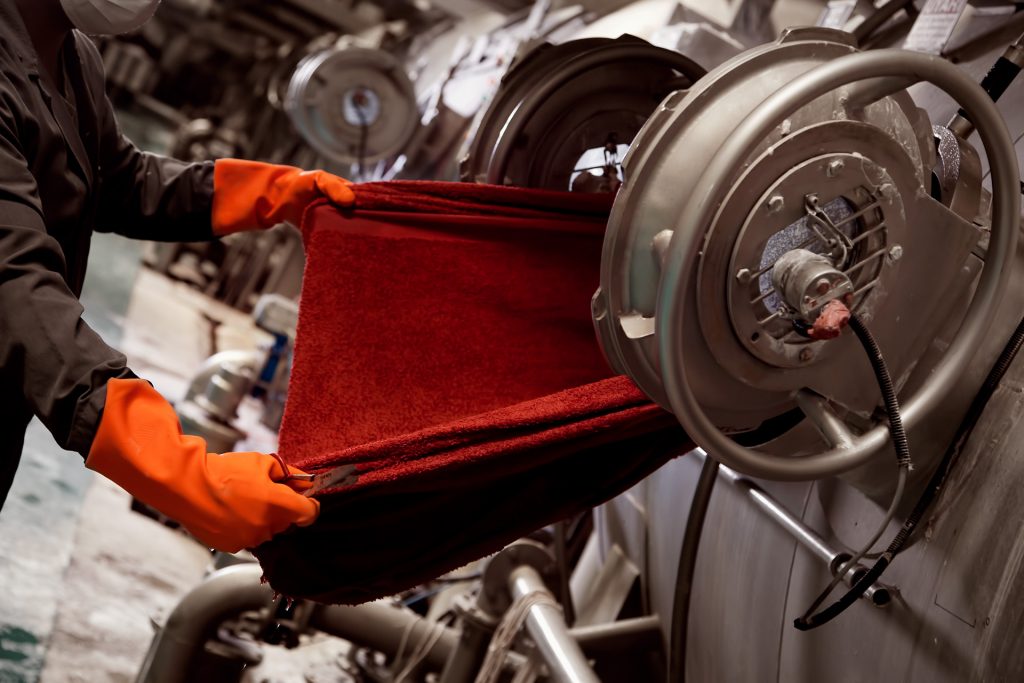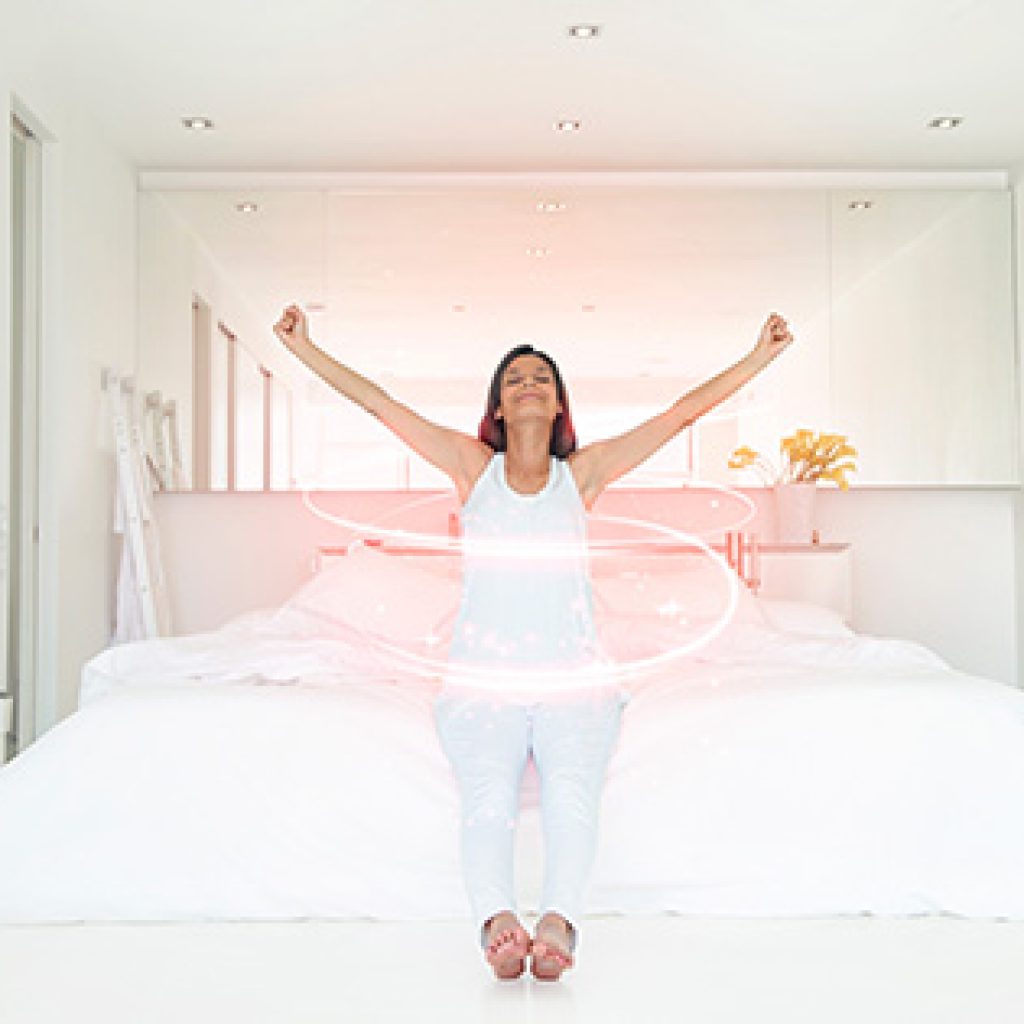
MEGATRENDS
What makes your customers tick? Why do they behave the way they do? And how do they like to buy? The answers to those questions are your key to success.
We may be lab geeks; we always keep a sharp eye on the world and the people in it. This allows us to discover trends early and anticipate them with tailored products. We gladly share this knowledge with you, so you can improve your textiles and sell quality fabrics you can be proud of. Let’s dive into 5 megatrends and the chances they create for your business.

WELLBEING
We live in an exciting but stressful era. The internet has blurred the lines between social and private time, causing people to search for ways to get away from the ongoing message flows. Textiles can help them get more relaxed and find Zen. Here’s why.
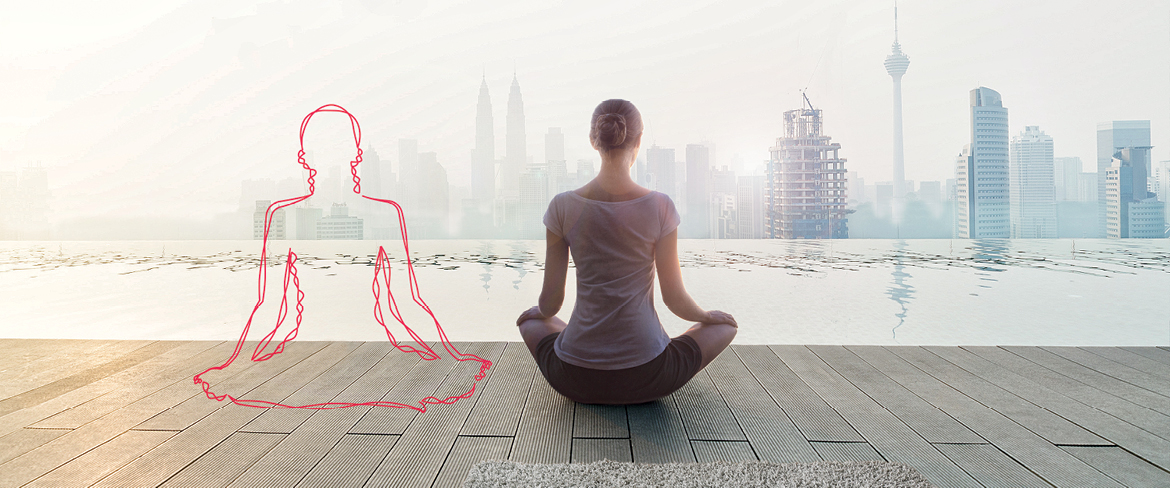
People spend more time on their psychological and physical wellbeing, and with right. Parents with fulltime jobs, three kids, two dogs and a social life are no exception to the rule. Yoga and meditation have become the ultimate way to relax and let go of work schedules and stress. And as is the case with every trend, aesthetics form an important element of the matching outfits. As a result, more and more customers ask for yogawear that is pretty, breathable and performance-enhancing.
The wellbeing trend also includes the growing popularity of special textile functionalities, such as scenting finishes that add a fragrance to a shirt or other piece of clothing. Additionally, there’re boosting aroma finishes with coffee and lavender that help the user to focus or relax. The superlative of these so-called smart textiles involves finishes with encapsulated crèmes or minerals that are being released during movements, to improve the condition of the skin and to optimise the energy level.
This is where you come in
Wellbeing and textiles go hand in hand, as the way people feel is highly influenced by the way they dress. By adding second and third functions to your products, you give your customers just what they need in their moment of peace and quiet. And as there’re so many ways to add value to textiles, the sky is your limit. When combined with digital printing techniques, for example, you create multi-coloured yogawear that is calming, ventilating, supporting and smells like your favourite perfume.

VITALITY
Health has gone mainstream. Everywhere we turn, there’s people telling us what to do and what to eat to stay fit. With today’s technologies, your textiles can play an important role in this global trend. Here’s why.
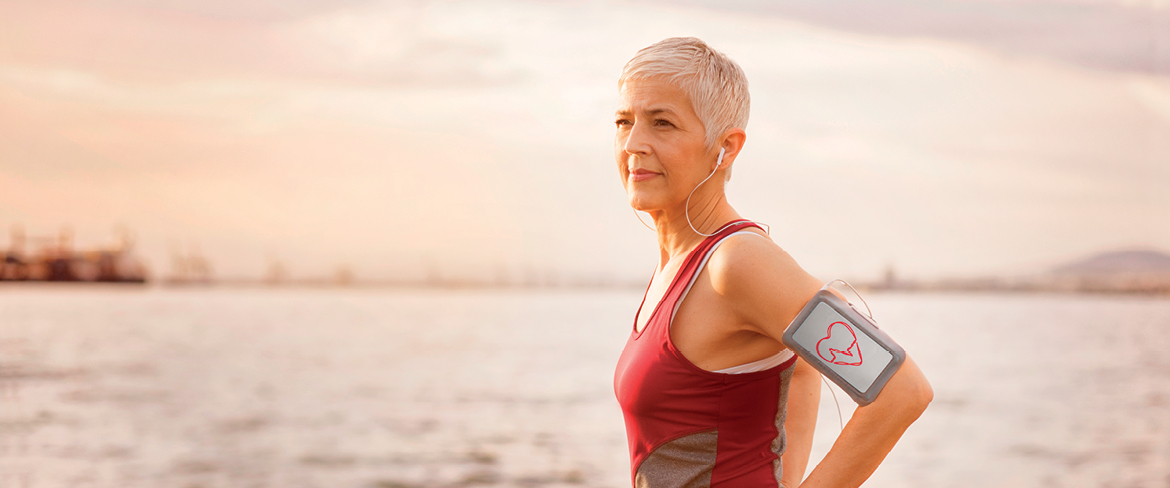
When you go out on the street, chances are high you’re being overtaken by all kinds of sports enthusiasts. People no longer work out because their partners told them to; they actually feel like it. Sports have become an art form and are part of the healthy lifestyle all of your customers pursue. The times they put on sweat pants and sneakers are over, though. Today, sports can’t go without the newest running gear, the best footwear and the smartest technology.
At the same time, people get older. Many people over 65 have problems with balance and movement and suffer from age-related diseases like stiff muscles and joints. As they still want to live an independent life, there is an increasing demand for smart textiles that help them keep their balance and prevent them from falling or slipping. This adaptive wear should be soft, lightweight and fashionable at the same time.
This is where you come in
Both health trends have spurred the development of technical marvels that support people in their sports activities and daily lives. This goes beyond smart watches and supporting shoes. Smart textiles, or performance textiles, have become an important influencer of the way your customers move. They keep them warm but ventilated and sometimes even release active ingredients to the body to optimise blood circulation and energy flows. We see an increase of these smart textiles with second, third, or even more functions and happily join the trend ourselves.

PROTECTION
Soldiers need special clothing that is flexible, waterproof and insect repellent. But they’re not the only ones in need of protection. Jobs, many hobbies and even holiday trips get consumers into situations where they need to take extra measures. For these measures, they turn to you.
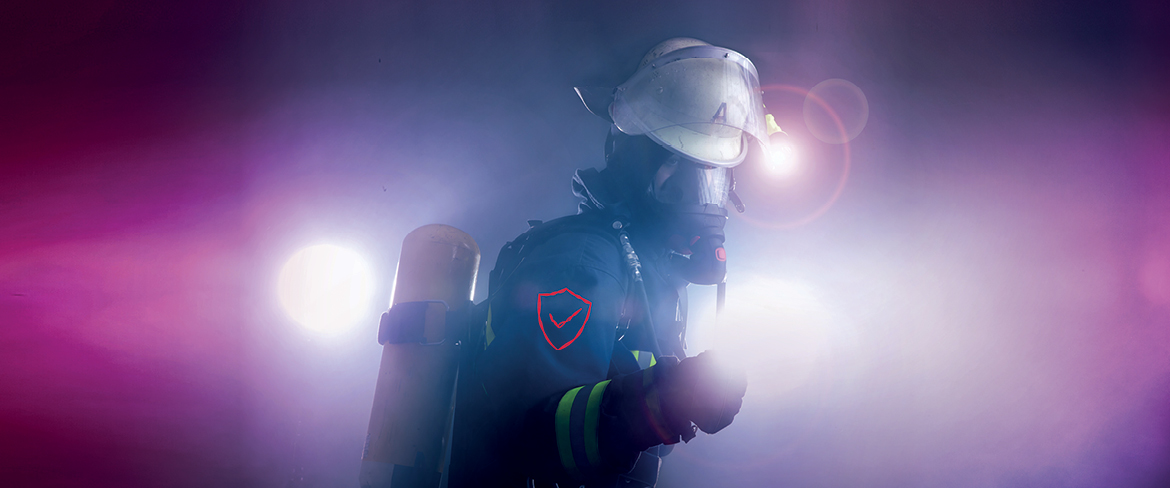
Textiles play an important part in the safety of your customers, as they take them wherever they go. This has caused a growing interest in products that protect people against all kinds of trouble, like fire, water, chemicals or insects. This demand for extra textile functions can influence your production process, as you will be needing to introduce new finishes and coatings that may not always be compatible with your machinery and fabric types.
At the same time, the government and consumer associations carefully check if products live up to safety standards. These include ISO norms, regulation policies or simple parameters such as “must be safe for outdoor use”. If products fail to meet these standards, you risk punishment, reputational damage and a decrease in sales volumes. So, to meet both customer and governmental standards, there is some work to do. Luckily, we have a wide range of products that comply with all standards set by the authorities and your industry segment, that you can use to give your textiles a safety upgrade.
This is where you come in
As textiles come in many forms (clothes, tents, uniforms and even car upholstery), there are many ways for textile manufacturers and brands to contribute to the safety of the end-user. Whether your textiles are turned into waterproof and insect repellent military uniforms or flame-resistant tent canvases: all safety functions add value to your products. They enable customers to do their job, make holidaymakers feel secure and make your product range stand out.

SUSTAINABILITY
Let’s not put the environment on the agenda: make it your basic principle instead! Economic growth and natural resources do not exclude each other, but pave the way towards a steady relationship with both the earth and your customer base. Here’s why.

Today’s customers have many questions. What’s in my food? Where do energy suppliers get my energy? How do manufacturers produce my clothes? This curiosity has caused a true green revolution, and influences the way customers select their products. Nature-based products have gained popularity, whereas polluting products and hazardous chemicals are avoided or even banned. This trend is not just customer-driven, though. Companies are just as aware of their ecological impact, and ways to reduce it.
This is great news for the textile industry, as a focus on sustainability boosts the development of better products. It stimulates manufacturers to use eco-friendly products that contribute to a greener planet and help fighting pollution. And although working on a better world is hard work; it also creates chances for your business. When it’s sincere, a green, transparent and sustainable corporate strategy builds bridges with customers and helps you turn them into true partners.
This is where you come in
As a textile manufacturer, there’re many ways to anticipate the sustainability trend. Think about all the finishes, coatings and pre-treatment chemicals you’re currently using. Can you replace them with green alternatives? Can you buy highly concentrated products and reduce shipments? Are there ways to make your production processes more efficient and cleaner? At TANATEX, we’re big fans of natural resources and happily include them in as many products as possible. We use minerals, clay and water-based products that help make your production processes eco-friendlier while reducing waste.

QUALITY
Industry winners have many secrets, but quality isn’t one of them. Quality is visible, provable and speaks for itself. Want to find the way to the hearts of your customers? Then simply be the best they can get. Here’s how.

In this world full of options, people can buy where and whenever they want, and switch suppliers easily. The internet makes it easy to shop worldwide, making it hard to stand out and build a strong customer relationship. This applies to both textile managers and brand managers, who are just as surrounded by other companies selling seemingly comparable products. You can fight competition with clever marketing, but in the end, customers will judge you based on outcome, and the way you deliver on your promises.
Your direct customers are focused on selling the very best products, for which they need top-shelf textiles that are tailored to their specific needs. So, if you want to offer quality, you need to know who you’re selling to. Who are your customers? What are their biggest headaches and what makes them run faster? To which types of end-users do they sell? If you’re able to produce textiles that meet (and even exceed!) your customers’ expectations, you’re well on your way to delivering high quality.
This is where you come in
You can improve the quality of your textiles in every stage of the production process. Our pre-treatment chemicals, for example, prepare your textiles for bleaching, printing, and dyeing, while our coatings and finishes add extra softness, fragrances, and functions to your fabrics. They turn beige into bright white, shirts into smart textiles, and fair shades into brilliant colour patterns. These details make the difference between a mediocre product and a great one, and it will most definitely make the difference between surviving and winning.






